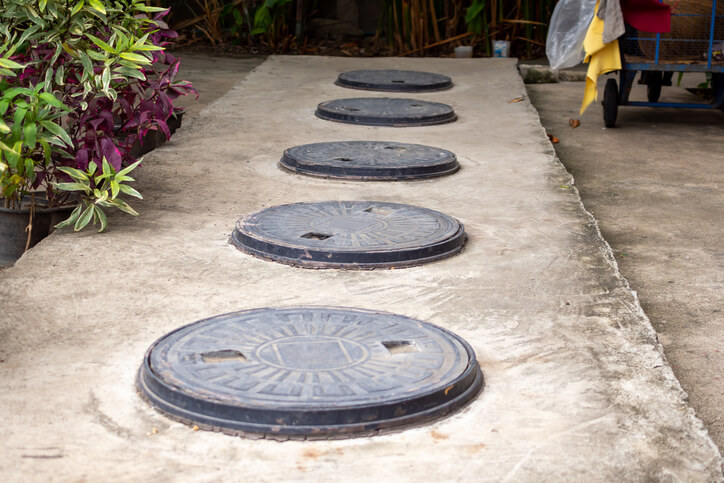Popular Types Of Septic Systems
Despite common conceptions, there are actually several different types of septic tank systems. Some have fallen out of favor over time, while others are still in use today. Whether you’re in the market for septic tank installation and are wondering which is best for you or want to understand how your current septic tank functions and if it’s worth replacing it, this guide is a great place to start.
To learn how to maintain septic tanks, check out our homeowner’s guide to septic systems.
Contact the professionals at Jones Plumbing & Septic Tank Service for septic tank service and repairs.

Conventional System
A conventional system is typical of single-family homes or small businesses. Due to their size and function, they usually can’t handle higher volumes of waste from multiple sources like in duplexes or business complexes. Since these types of systems are common, most septic tank companies will be familiar with them. They’re also usually simple to repair. However, because this system uses a drain field for filtration, it’s difficult to install on small plots of land.
Chamber System
Chamber systems have been in use since the 1970s and do not utilize a gravel drain field system. This feature makes them particularly good for areas that experience high precipitation levels throughout the year or where groundwater levels are high, making them a popular option in Florida. To accomplish this, the chamber system uses a series of chambers and connected pipes to move wastewater. The drawback of this is the additional risk of requiring septic tank repairs and maintenance.
Aerobic Treatment System
An aerobic treatment system uses two tanks to pretreat and final treat wastewater with oxygen. This adds extra nutrients that aid in treating the water, making a drain field unnecessary. This type of system is also suitable for areas with high water tables or areas that lack the required area to install a drain field. It also doesn’t require high-quality soil to filter wastewater, so it is optimal for lots with rocky or clay soil. An effectively “green” solution to managing your wastewater, you can even connect it to your sprinkler system to water your lawn. However, this type of system requires maintenance roughly every four months.
Drip Distribution System
Drip distribution systems have snaking pipes buried just 6 to 12 inches below the soil, making for easy access when repairs are needed. Because of the piping system, a traditional drain field isn’t required, nor is deep digging for installation. However, they are much more complex than conventional systems and will require frequent maintenance. They also require electricity to make the drip method work, tacking on an extra cost to use.
Mound System
The mound system constructs a large sand mound, which is used as the drain field. This system is a good option for areas with shallow soil depth, high groundwater, or shallow bedrock, and is particularly popular in rural areas where plots of land tend to be larger. The space required for this system means it’s not an option for smaller properties. It also requires more maintenance to keep it in working order.
Sand Filter System
Sand filter systems allow the option for construction above or below ground, and are good for limited soil areas. They are also well-suited for areas near bodies of water or with high water tables. However, they are more expensive to install and require frequent maintenance.
Find out more about septic tank maintenance.
